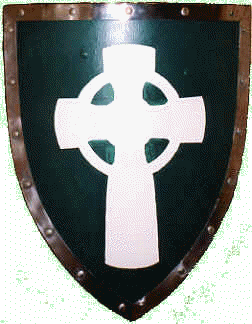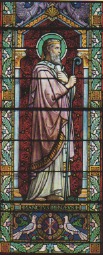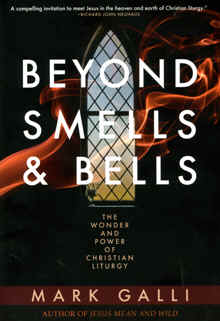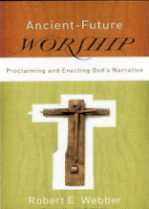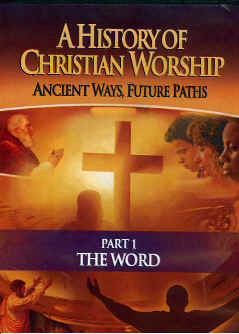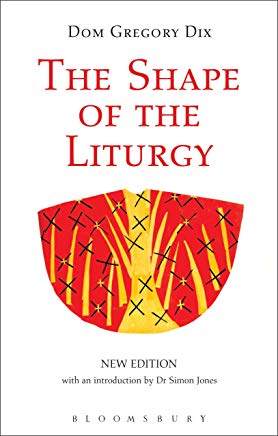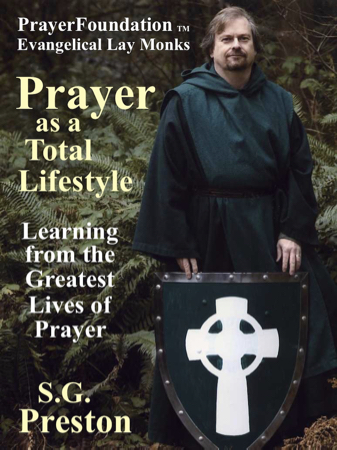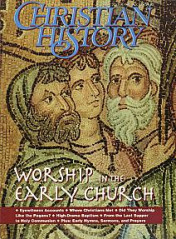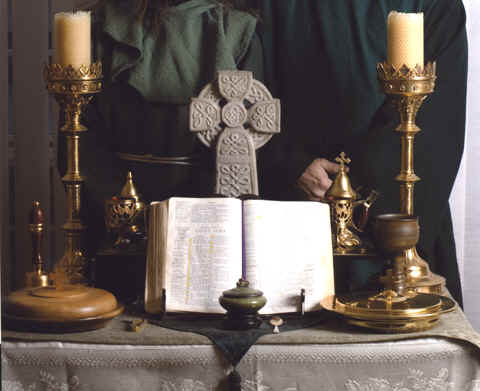
“Then I will go to the altar of God, to God my exceeding joy: yes, upon the harp I will praise You; O God, my God.”
-Psalm 43:4
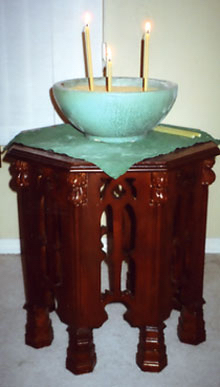
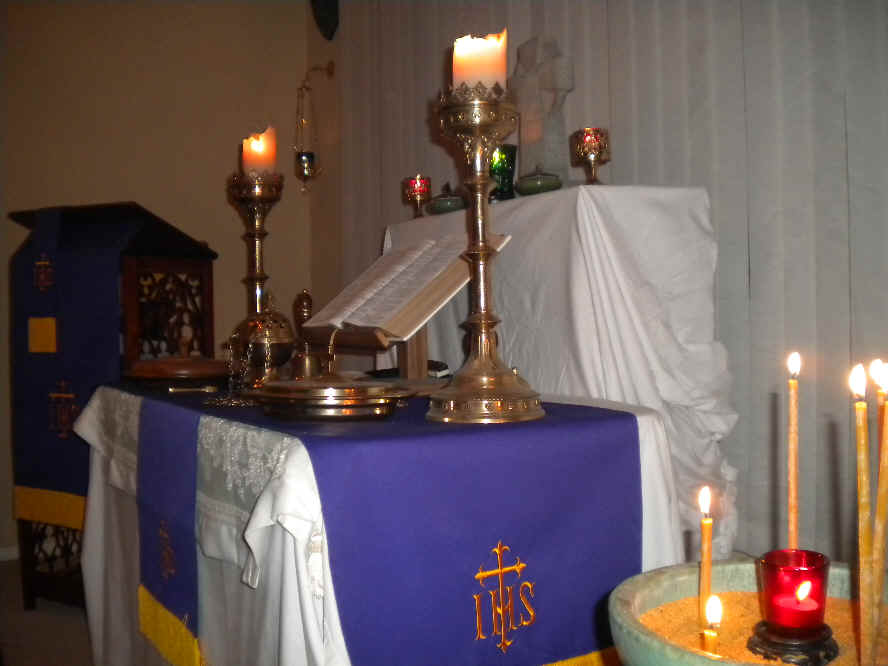
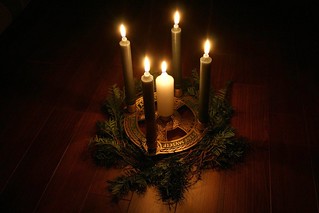
Worshippers entering our Monastery Chapel may, if they wish, light a candle (and pray). This symbolizes Christ, “the light of the world.”
“I am the light of the world: those that follow me shall not walk in darkness, but shall have the light of life.”
-John 8:12
It also reminds us of Scripture prayed during our Worship Service:
The entrance of Your Word gives light. –Psalm 119:30
Your Word is a light unto my path. –Psalm 119:105
The spirit of a person is the candle of the LORD. –Proverbs 20:27
You will light my candle; the LORD my God will enlighten my darkness. –Psalm 18:28
wHAt is ON Our MONAStERy CHAPEl PRayEr AltaR ?



(Technically, it is a wooden Communion Table)
And how do we use all the things that are on it…both in our Worship Service, and in our Daily Prayer: Praying the Hours of The Threefold Daily Prayers?
COMMuNiON
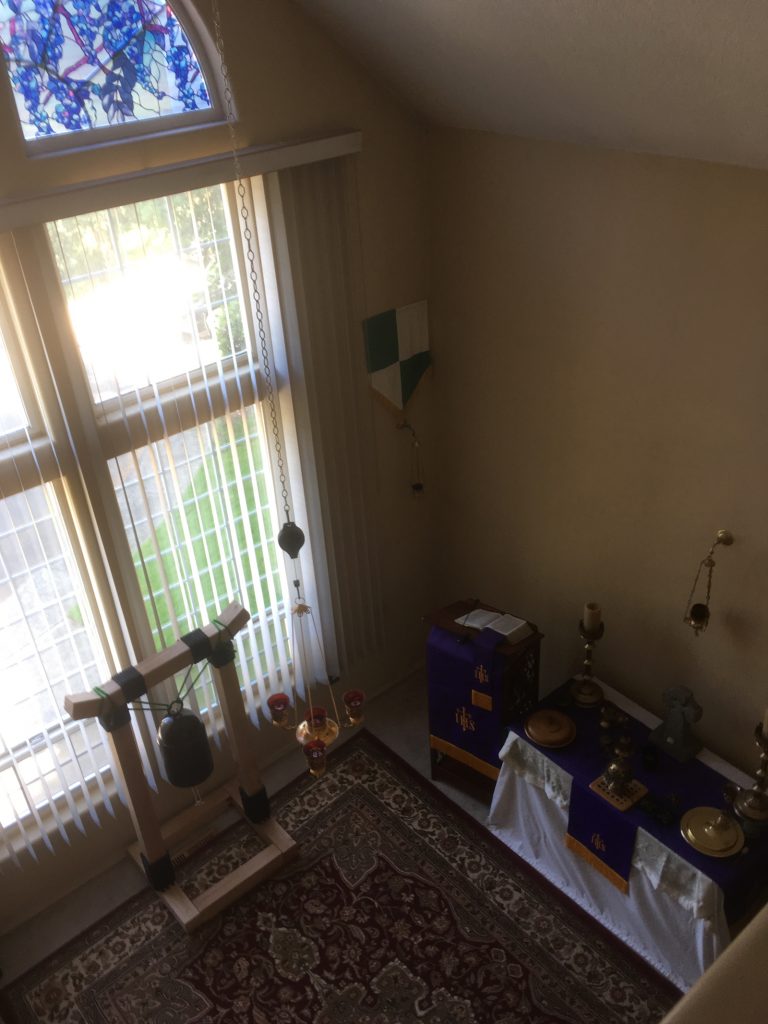
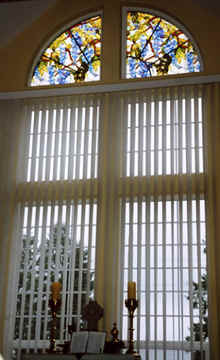
What is referred to by many as the Altar in our Monastery Chapel, was made by Lay Monk Preston out of Lay Monk Linda’s parents’ former family Dining Room table (composed of solid oak), and which he cut down to a much smaller size, to be our Monastery Chapel’s Communion Table.
We have been told that it shouldn’t be called an altar because no sacrifice is made on it, Christ’s once and for all sacrifice being all sufficient for our sins. How true! Yet, we should not forget that there was more than one altar in the ancient Jewish Temple.
Outside, in the courtyard was the altar of animal sacrifice, where blood was shed for atonement for sin. Inside, in the Holy of Holies, was the gold-covered altar of incense, incense being a symbol for the prayers of God’s people.
Lay Monk Preston once asked a Greek Orthodox Priest if his Church’s altar was made of wood or stone; he had heard that Eastern Orthodox altars were usually made of wood. The Priest said that there was no rule concerning what it should be made out of, that he had served at ones made of stone, of wood, and even of other materials.
“But in the Orthodox Church,” he continued, “we refer to it as the ‘Holy Table.'”
AltaR CLOtHS & PaRaMENtS
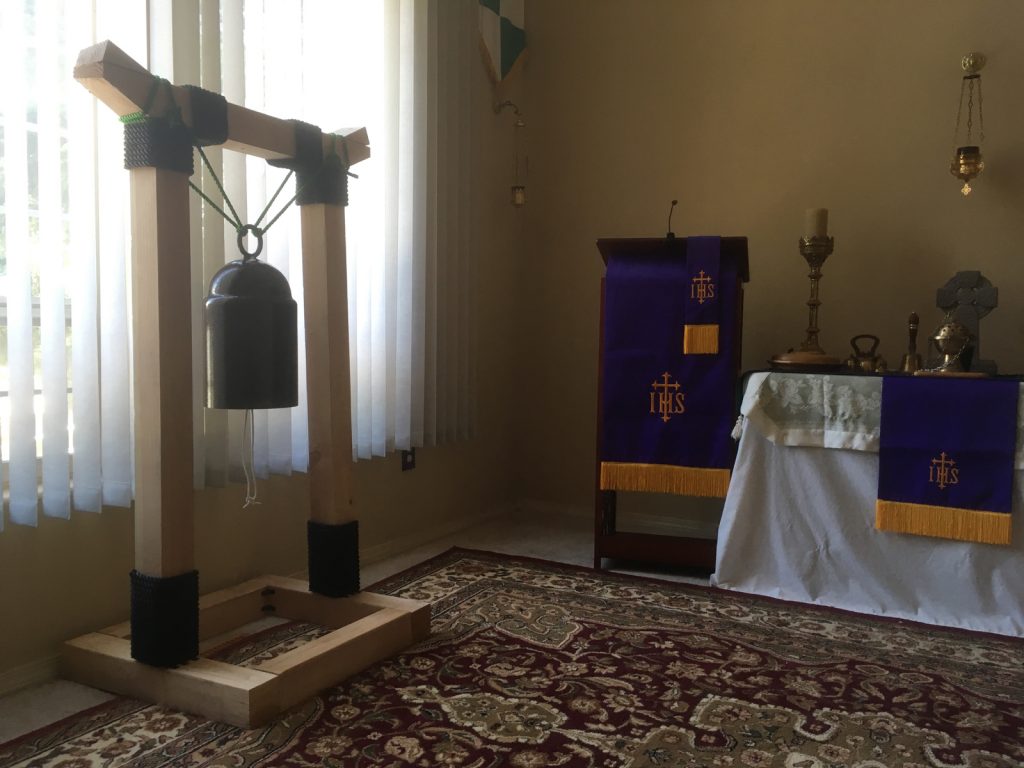

Our Communion Table (or Holy Table, or Prayer Altar) is covered with a white linen “Altar Cloth” with a white lace piece embroidered with leaves and flowers over the upper front portion of it.
Historically, Protestant and Roman Catholic Churches use white linen as being symbolic of Christ’s burial shroud. Linen was the material prescribed in the Old Testament for the priests, including the High Priest. As Christians, of course, Christ is our High Priest.
Eastern Orthodox use differently colored fabrics for their Holy Tables.
The cloth pieces that change colors with the Church Seasons and are usually embroidered, often in gold, with different Christian symbols, are called “paraments.”
These change from Green (Ordinary Time and Epiphany), to Purple (Advent and Lent), to Red (Holy Week and Pentecost), to White (Christmas and Easter) with the changing Church Seasons.
Some Protestant Churches do not use Red colored paraments, and Lutherans use Blue instead of Purple during Advent.
tHE HOLy ScRiptuRES
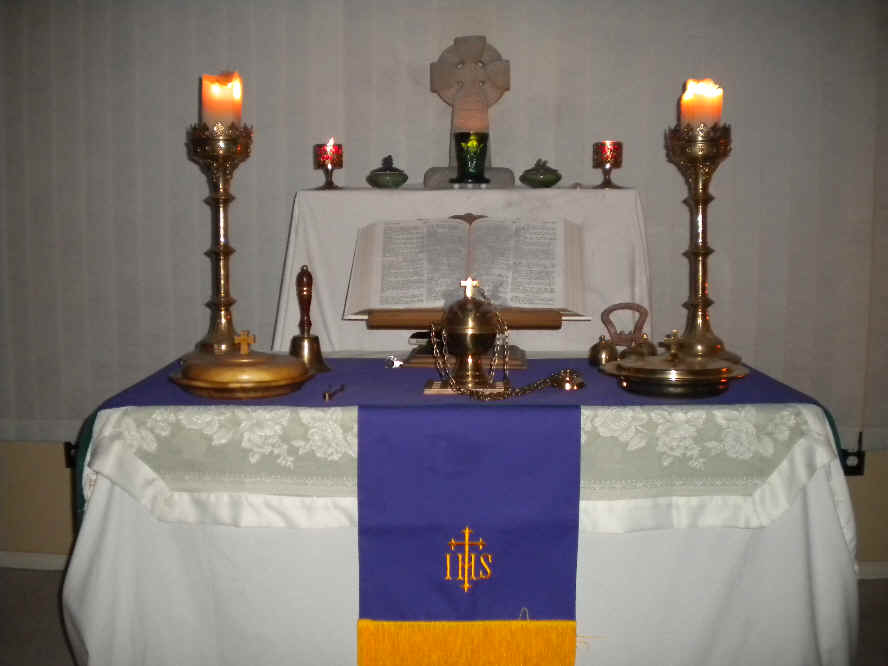
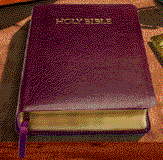

The Bible is placed in the center of our Communion Table because God’s Word is central to our Christian Faith. Evangelicals believe it is God’s Revelation, inerrant in the Original Autographs, and our ultimate and final authority in matters of faith and practice.
The Bible shown in the photo at the very top of this page (and directly Below) is the old, well-worn King James Version Thompson Chain-Reference Study Bible that has been Lay Monk Preston’s favorite personal Bible from the time he first became a Christian. The yellow highlighting marks verses he has memorized.
tHE cROSS
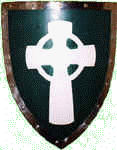


Also centrally located is the Christian Cross. In this case it is a Celtic Cross, as we draw so much inspiration for our own Christian lives from the lives of the ancient Celtic Christian Monks.
The Emperor Constantine declared Christianity legal in 313 A.D., and began using Christ’s Cross as a symbol throughout the Empire.
The Cross of Christ became the symbol of Christianity in the 4th Century, replacing the Early Church’s use of the Ichthys Fish Symbol. Ichthys is the word for fish in the Greek spoken in New Testament times (Koine Greek).

ΙΧΘΥΣ (ICHTHYS) is also an acronym for Iēsous Christos, Theou Yios, Sōtēr, which translates into English as: Jesus Christ, Son of God, Savior.
The Cross continually reminds us of our Lord’s death for our sins, followed by his Resurrection and His offering of His blood in Heaven as our one Mediator and Intercessor, by whom only we can enter into God’s presence. It reminds us that Christ now:
“…sits at the right hand of the Father. And He shall return, with glory, to judge the living and the dead; His kingdom shall have no end.”
Dr. J. Vernon McGee often said:
“Christianity is not a religion. Christianity is a person: Christ. And you either have received Him as your personal Lord and Savior, or you haven’t.”
The Cross also reminds us that we who have received Christ must now die daily, taking up our own Cross, and following Him.
“Then Jesus said to His disciples, ‘If anyone will come after me, let them deny themselves, and take up their cross, and follow Me. For whoever would save their life shall lose it, and whoever will lose their life for My sake shall find it.'”
-Matthew 16:24-25; Luke 9:23-24
cANdLES & Oil LAMpS
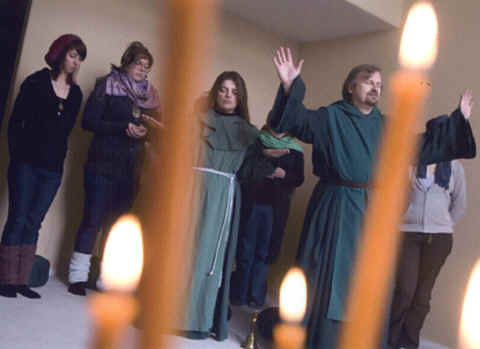
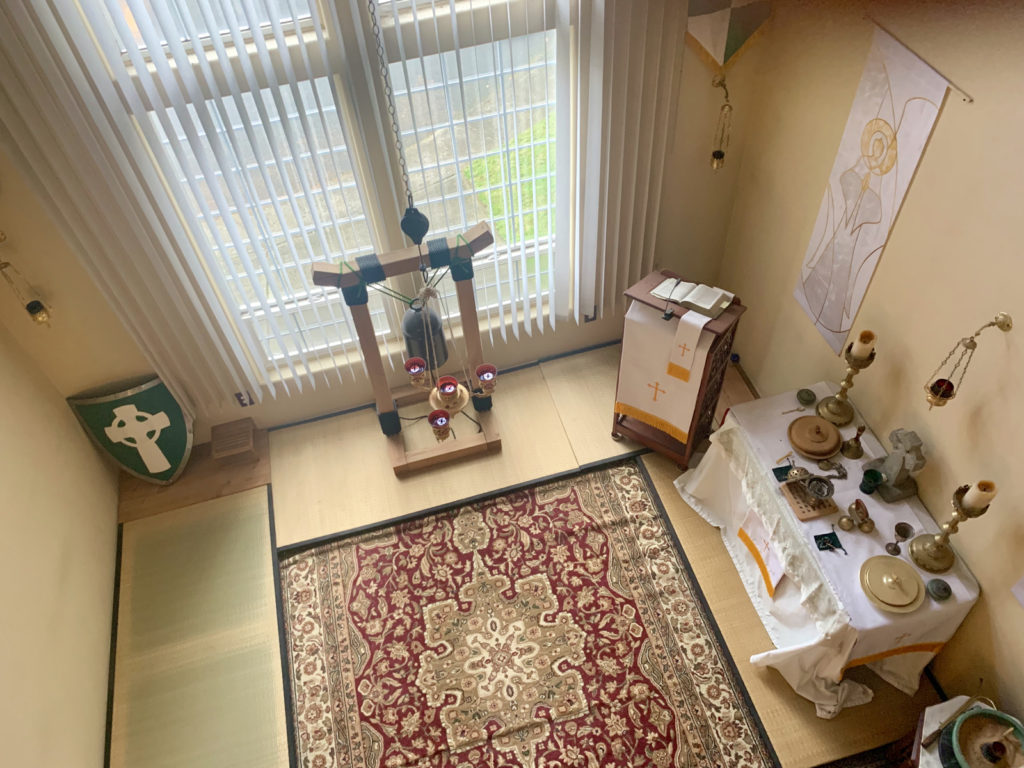
All of the candles used in our Chapel are made of 100% pure beeswax, which have a slight “honey” smell. Modern candles are made from petroleum by-products with chemicals providing their various “smell flavors” — they give off harmful fumes, and much more than natural beeswax candles, will stain walls and ceilings with soot.
Lighted candles symbolize Christ, “the light of the world.” (John 8:12). The purity of beeswax symbolizes Christ’s perfect purity and sinlessness. White, “natural,” or ivory colored candles have historically been used to symbolize Christ’s purity.
Our two large candlesticks are replicas of ones found in Notre Dame Cathedral on the Ile de Cité in Paris. The candles in them are pure beeswax pillars (3″x 6″), wrapped in sheets of unaltered honeycomb. Having two main candles symbolizes Christ’s two natures: His perfect humanity and His perfect divinity.
Also shown are two small brass Byzantine-style (from Greece) tea-candle holders with red glass inserts. The color red has in historical Church usage been understood to represent the color of fire, and symbolizes the Holy Spirit. Our tea-candles are made of pure beeswax, also.
We light 12″ long beeswax tapers and insert them in a green pottery bowl filled with sand, while we are praying or attending our Worship Services. All of the beeswax candles that we use have been hand-molded by Eastern Orthodox Nuns.
Shown in the photo directly above on the right, are some of our seven hanging Byzantine oil lamps (Greek). One of these is our red-glass Sanctuary Lamp, which symbolizes the presence of the Holy Spirit. We burn pure olive oil in all of them.
You can see our Chapel’s Byzantine Chandelier (from Russia), and Monk Bob’s large Bell, in one of the photos near the top of this page, and also on our webpage: The Threefold Daily Prayers (Prayer Category).
The Bell was made by Blacksmith Mike, his final project as he was dying from Cancer. The Bell Stand was made by Lay Monk Preston in the Japanese style of some of our Chapel furnishings.
cENSERS, iNcENSE cONtAiNERS & iNcENSE
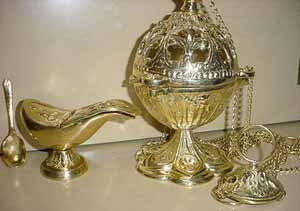
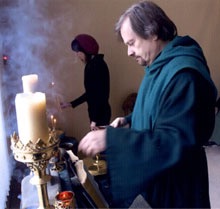
In the Photo at the top of this page, behind each of the two tea-candle holders are two censers (incense burners). The one on the left has a holding ring and and is suspended from three chains (symbolizing the Trinity).
It is swung to cense everything and everyone in the entire Chapel, signifying that everyone and everything in the Chapel is set apart for God’s Service. The Censer on the right may be held by a wooden handle, but usually is left in its place.
Our incense is made by Eastern Orthodox Monks. It does not burn and smoke by itself, you must light a small charcoal brick and place the incense on top of it. Our charcoal is made by Roman Catholic Monks (Prinknash Abbey in the U.K.). There is a pair of tongs that can be used to adjust the lit charcoal.
In the Bible, incense symbolizes the prayers of God’s people.
We use incense both because of its symbolism in the Bible, and in emulation of the worship of God in Heaven. When you worship God on earth, you are joining in the eternal worship of God in Heaven.
“Let my prayer arise before You as incense, and let the lifting up of my hands be as the evening offering.” -Psalm 141:2
“And the smoke of the incense, which rose with the prayers of the saints, ascended up before God, out of the angel’s hand.” -Revelation 8:4
The incense “boat” (the covered jar at front center) contains the incense that we use (we alternate using several different kinds, including pure frankincense from Eritrea).
The beautiful green porcelain container was handmade by a potter we know, as was the chalice (two different potters). The golden spoon to its right is used to spoon out the incense grains and place them on the charcoal coals in the incense censers.
Historically, everything, as an offering to God, is censed with incense. Especially we ourselves who are “in Christ” and offer ourselves as a “living sacrifice” after Our Lord’s own example, about which the Scriptures teach us that we should “walk in love.”
“And walk in love, as Christ also has loved us, and has given Himself for us; an offering and a sacrifice to God for a sweet smelling fragrance.” -Ephesians 5:2
bELLS

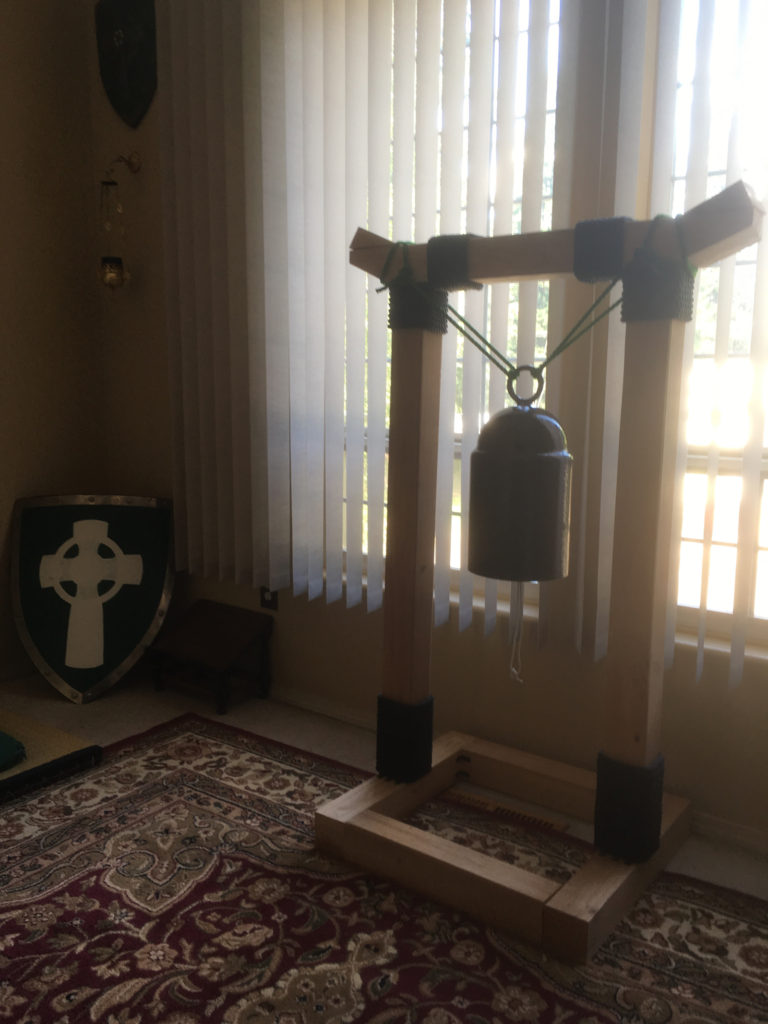
We ring Monk Bob’s Bell three times to both commence and signal the end of worship and prayer services. This has been the practice throughout history in Christian monastic communities, to call the Monks to worship, and to dismiss them.
A smaller bell consisting of three bells on one wooden handle is rung three times during the Sanctus portion of the service when the words “Holy, Holy, Holy” are spoken.
–Isaiah 6:3; Luke 13:35
cOMMuNiON cup tRay & bREAd PlAtE

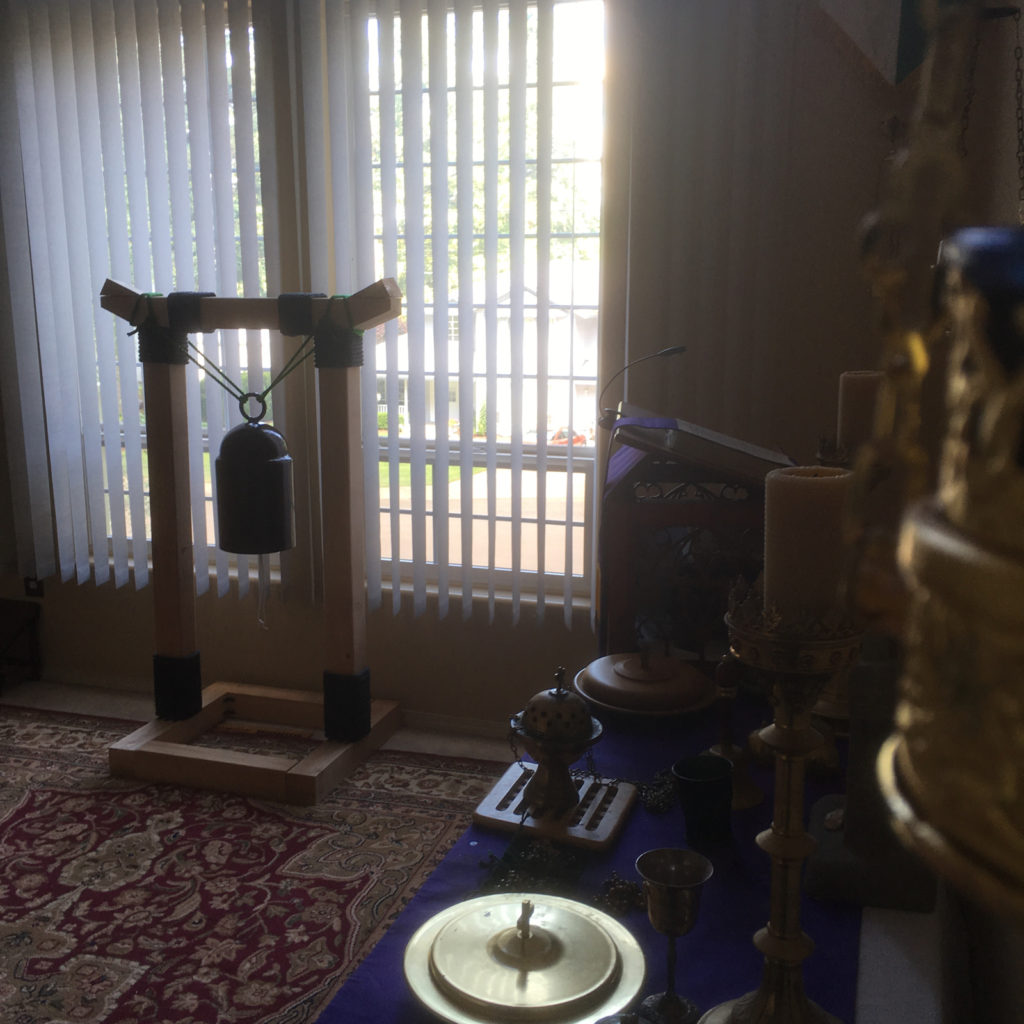
The covered golden Communion Cup Tray on the right, holds the small communion cups used today in most Protestant Churches.
Because we are an International, Interdenominational Christian Ministry, cups containing wine are found in the outer rings of the tray, and cups containing grape juice are found on the inner rings of the tray (we borrowed this practice from the Lutherans).
Our Communion bread is the round wafer type, historically used in both Protestant and Roman Catholic churches (in the 1970’s some Protestant churches began using different forms of Communion bread).
Ours are made out of whole wheat flour and water only (by Roman Catholic Nuns) and are stamped with three different designs: the Early Church’s Lamb of God & Cross, the Maltese Cross, and the Jerusalem Cross.
Our Communion Bread Plate (on the left side of our Communion Table) with its cross-topped cover is made of Myrtlewood and was crafted in a woodworking shop on the Oregon Coast.
Myrtlewood is a very beautiful wood with a striking grain. It was originally native only to Israel. It has since been planted in various places around the world, and The Oregon Coast is one of the places where it now grows.
The golden tongs to its right are for sharing the individual Communion wafers.
cOMMENtARy:
Blaize Pascal (1623-1662) once said:
“All humanity’s problems stem from an inability to sit in a quiet room alone.”
If he meant this as a reference to prayer to God through Christ, it is true. And, since Pascal was a Roman Catholic Theologian, this probably was his meaning.
Or you could re-phrase it in a way that sums up the teaching of Psalm 2:
“All humanity’s problems stem from rebellion against God and His Messiah.”
______________________________
Our Monastery Chapel / Prayer Altar
Although we use our Chapel for our weekly formal home Worship Service (we each attend the local Church of our choice on Sunday), our Chapel began as and remains throughout the week, our dedicated Prayer Room. We recommend this, if possible: for many it is not.
A dedicated area is next best. In our first small House Monastery (less than half the size of our current one), with eight adult residents, even this was not possible.
Praying while walking our Scottish Terrier for an hour each day was often the closest I could come to solitude. So, we have to do what we must. Any room can be used as a prayer room.
Our Lord taught:
“But you, when you pray, enter into your room, and when you have shut the door, pray to your Father in secret; and your Father who sees in secret shall reward you openly.”
-Matthew 6:6
______________________________
-Yours in Christ,
-Lay Monk Preston
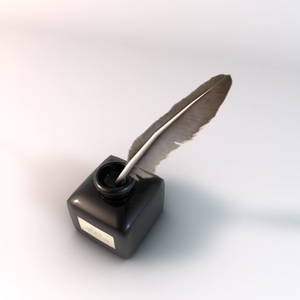
yOuR cOMMENtS: (lAy MONK KaREN, NEw JERSEy)
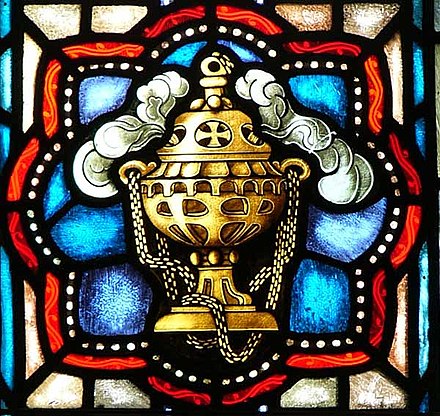



JOHN CASSiAN (QuOtES):
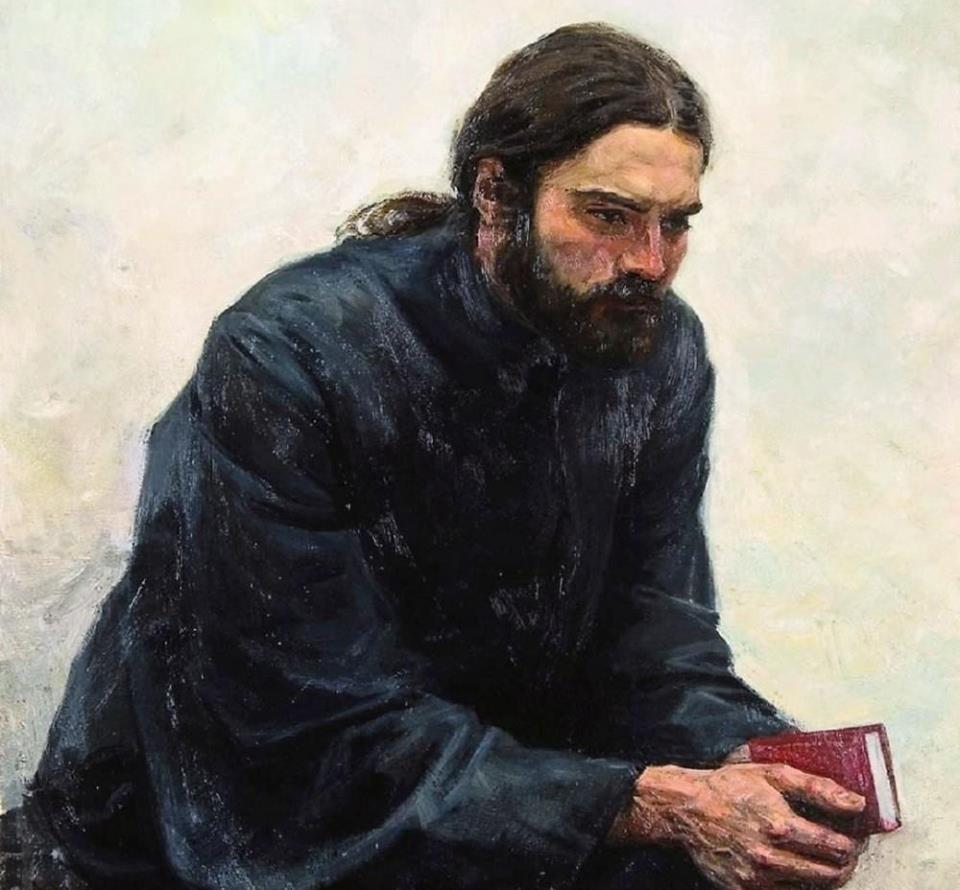
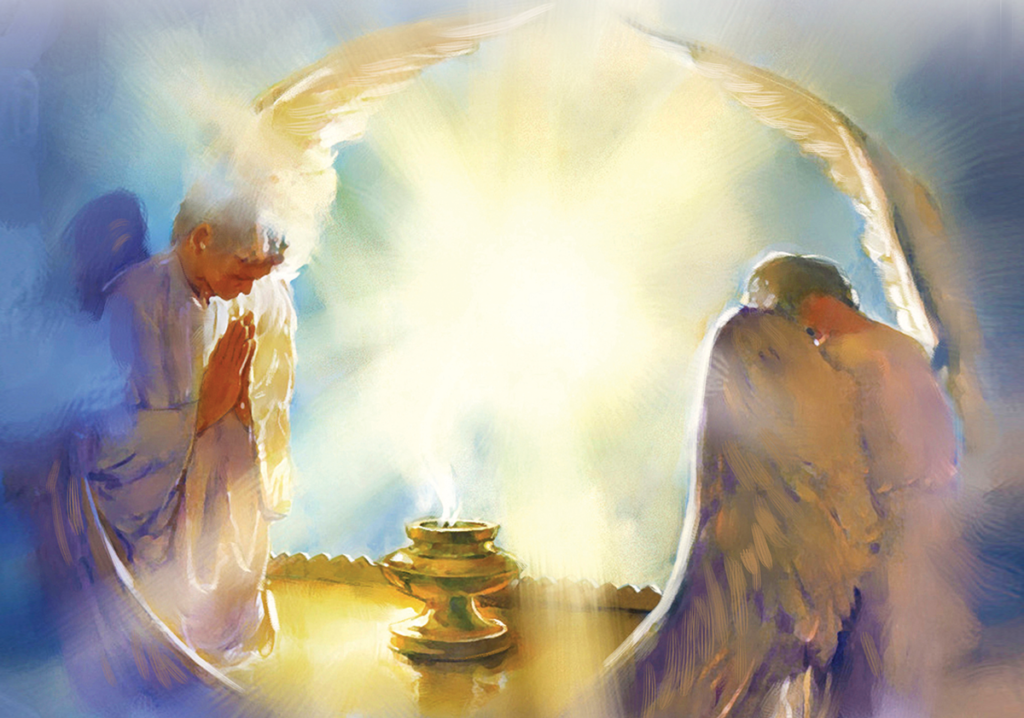
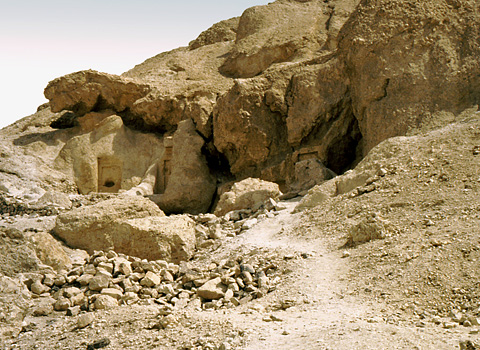
“It is not an external enemy we dread. Our foe is shut up within ourselves. An internal warfare is daily waged by us.”
____________________
“Let us not believe that an external fast from visible food alone can possibly be sufficient
for perfection of heart and purity of body
unless with it there has also been united a fast of the soul.
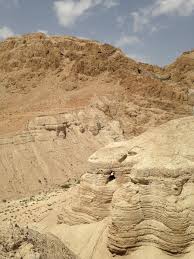
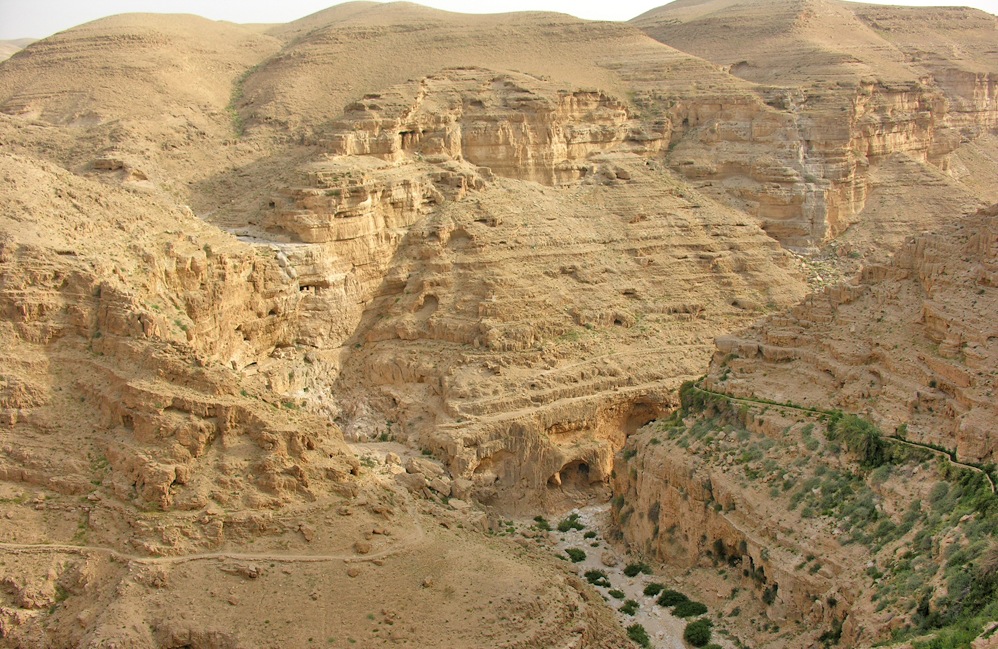

For the soul also has its foods that are harmful. Slander is its food, and indeed one that is very dear to it.
A burst of anger also supplies it with miserable food for an hour, and destroys it as well with its deadly savor.
Envy is food of the mind, corrupting it with its poisonous juices, and never ceasing to make it wretched and miserable at the prosperity and success of another.
Vanity is its food which gratifies the mind with a delicious meal for a time, but afterward strips it clear and bare of all virtue.
All lust and shift wanderings of heart are a sort of food for the soul, nourishing it on harmful meats, but leaving it afterwards without a share of its heavenly bread and really solid food.
If then, with all the powers we have, we abstain from these in a most holy fast, our observance of the bodily fast will be both useful and profitable.”
____________________
“…which our Lord, in His prayer, hopes may be fulfilled in us:
‘That they all may be one as we are one, I in them and You in Me, that they also may be made perfect in one;’
and again:
‘Father, those whom You have given Me, I will that where I am, they may also be with Me.'”
-St. John Cassian (360-435 A.D.) From: “The Life of Prayer,” and “On Prayer” Monk, Author: The Conferences; The Institutes
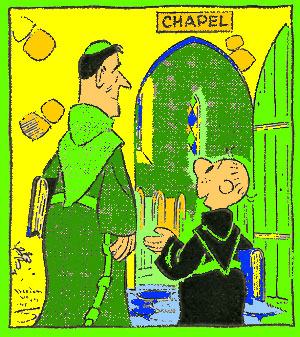
“Brother Juniper” Copyright © 1959, 1960 Publishers Syndicate. All Rights Reserved.

This Website: PrayerFoundation Evangelical Lay Monks ™ Built by: S.G. Preston Ministries ™
Copyright © 1999-2024 S.G. Preston. All Rights Reserved.
Photos & Text Copyright © 1999-2024 S.G. Preston. All Rights Reserved.
